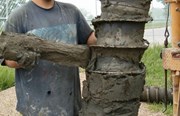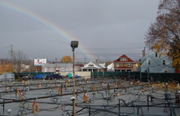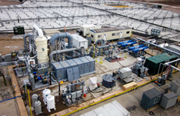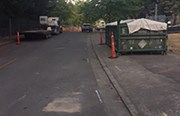HRSC 103: What is the WaterlooAPS and How Does It Work?
By: Casey MooreIf you’re new to the environmental services field, there are probably tools you haven’t had a chance to use, and you’re not entirely sure what they do or when to utilize them. One such tool is likely the WaterlooAPS.
In this blog post, I’ll provide a basic explanation of the technology, how it works, and when you should consider it for your high resolution site characterization (HRSC) needs.
What is the WaterlooAPS?
The Waterloo Advanced Profiling System™—or WaterlooAPS—is a specialized HRSC tool that measures hydrostratigraphic data while collecting multiple discrete groundwater samples in succession from a single advancement. It was designed to collect more data in less time (and with fewer associated costs) than traditional methods.
Because it collects groundwater samples via low-flow sampling and those specimens are analyzed by a laboratory, the data generated is considered representative and defensible characterization for most groundwater contaminants.
How does the WaterlooAPS work?
The WaterlooAPS is most often used in conjunction with a direct push technology (DPT) platform, but can be advanced using cone penetration testing (CPT) rigs. Regardless of method, the WaterlooAPS technology functions in the same way. As the tool advances, clean water is injected into the subsurface via stainless steel tubing and the tip of the probe. Simultaneously, the depth, pressure and flow rate are all being monitored and recorded in a continuous log of the relative permeability, which is used to determine preferred intervals for groundwater sample collection.
When the WaterlooAPS probe has reached the appropriate depth and is ready to collect samples, the flow through the tip is stopped, and groundwater is then purged back in via a peristaltic pump or gas drive evacuation method. The groundwater samples are collected from an in-line sampling jig that precedes the water quality meter flow-through cell, which ensures that if volatile organic compounds (VOCs) are collected, they are never exposed to ambient air or system components that would risk cross contamination.
When is the WaterlooAPS the right technology for an HRSC project?
There are many types of projects where the WaterlooAPS can provide valuable data, but a few of the most common scenarios include:
- When you aren’t sure what contaminants may be present. The WaterlooAPS isn’t restricted by contaminant type—it can sample for nearly any compound or analyte.
- When you need to specifically test for PFAS and 1,4-dioxane. Not every HRSC tool is equipped to sample for these contaminants, but the WaterlooAPS and subsequent laboratory analysis can provide accurate data delineating the extent and concentration of PFAS and 1,4-dioxane, if present.
- Your budget is limited, but your data requirements are not. The WaterlooAPS collects hydrostratigraphic data while also conducting discrete sampling on a single advancement. This can cut both the time and cost required of your characterization efforts.
The WaterlooAPS is really the premier HRSC tool when measuring hydrostratigraphic data, but it also has the capacity to save time and money if you know which projects it’s most suited for.
If you’d like to learn more about it, download our technology overview.
If you think you’d like to use it on a project, request a quote.
ABOUT THE AUTHOR

Casey Moore
Project Manager
[email protected]
Casey Moore is a Project Manager at Cascade, where he specializes in projects involving HRSC. He’s worked in the environmental services industry for 10+ years, and is the resident expert on the WaterlooAPS technology and best practices.












